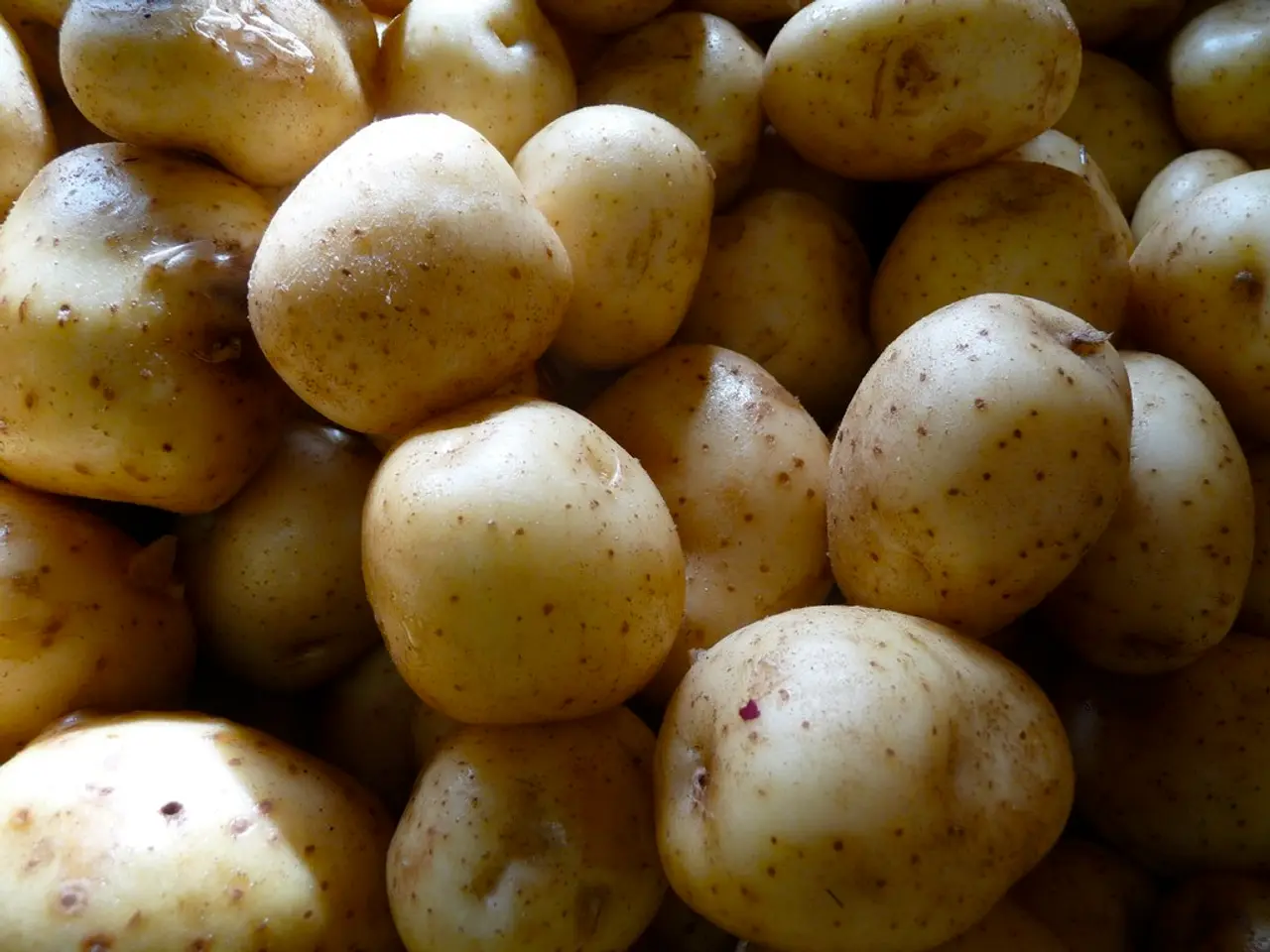Sweet potato planting guidelines for Zone 7, including the ideal time for sowing and valuable advice.
Growing Sweet Potatoes in USDA Zone 7: A Guide
Sweet potatoes, a delicious and nutritious root vegetable, can thrive in USDA Zone 7 with the right care and attention. Here's a comprehensive guide to help you cultivate sweet potatoes successfully in this region.
Climate
Sweet potatoes require warm soil and air temperatures. They thrive best when the soil temperature is consistently above 65°F, and nighttime temperatures remain above 60°F [1][5]. Zone 7 has a moderate growing season; planting should occur after the last frost when the soil is adequately warmed, typically late spring to early summer [1][3][5]. Using protective measures such as low tunnels or cold frames can help extend the season or protect young slips in cooler parts of Zone 7 [5].
Soil
Optimal soils are sandy loam or loamy sand with good drainage to avoid waterlogging and tuber rot [2][4]. The soil should be loose to allow tuber expansion without deformation [2]. Soil pH should be slightly acidic, ideally between 5.5 and 6.5 [2][4]. Incorporate organic matter such as compost or well-decomposed manure to improve fertility and moisture retention [2]. Avoid heavy clay or rocky soils as they impede root development and tuber growth [4].
Planting Practices
Sweet potatoes are propagated from slips (sprouts grown from mature sweet potatoes), planted with spacing of 16 to 18 inches between plants and 12 to 24 inches between rows for good airflow and soil warmth [5]. Plant slips into soil only when all risk of frost has passed and soil temperature is stable above 65°F [5]. Medium fertilizer levels are recommended, focusing on balanced phosphorus and potassium; excess nitrogen can promote vine growth at the expense of tuber size [2][5]. Water regularly during tuber formation, ensuring the soil remains moist but not saturated; once tubers have developed, sweet potatoes display some drought tolerance [4].
Cultivating Varieties
The recommended sweet potato varieties for cultivation in USDA Zone 7 include popular types like Beauregard, Jewel, Garnet, and Centennial, which are well-suited for this zone’s climate and growing season [1][5]. These varieties are widely grown and known for good yield and adaptability.
Post-Harvest Care
After harvesting, let the sweet potatoes rest on the ground for a couple of hours to dry out and toughen their skins. Using black plastic mulch can help warm the soil early, suppress weeds, and retain soil moisture. Avoid washing the tubers immediately after harvesting to prevent rot. Curing sweet potatoes involves keeping them at around 85°F with high humidity for about 10 days, followed by storage in a cooler environment, around 55-60°F, with good ventilation to prevent rot.
Pest Management
Common pests for sweet potatoes are sweet potato weevils and wireworms. Regularly inspect the plants and use organic pesticides if necessary. Rotating crops yearly can reduce the risk of soil-borne diseases such as black rot and fusarium wilt.
By following these guidelines, you can maximize the chance of a successful sweet potato harvest in USDA Zone 7. Happy gardening!
[1] National Gardening Association [2] Clemson Cooperative Extension [3] University of Georgia Extension [4] Mississippi State University Extension [5] Purdue University Extension
Read also:
- Life Expectancy with Interstitial Cystitis: Exploration of Research, Treatment Methods, and Additional Information
- Savoring Homely Delights: Veal Piccata Cooked Pan-Style and the Pleasure of Home Cooking
- Methods for contributing to the charity affiliated with our website, Global's Make Some Noise
- Exploring Color Consonance: An In-depth Analysis of the Aesthetic Influence of 2025's Preferred Colors in Community Residential Areas




